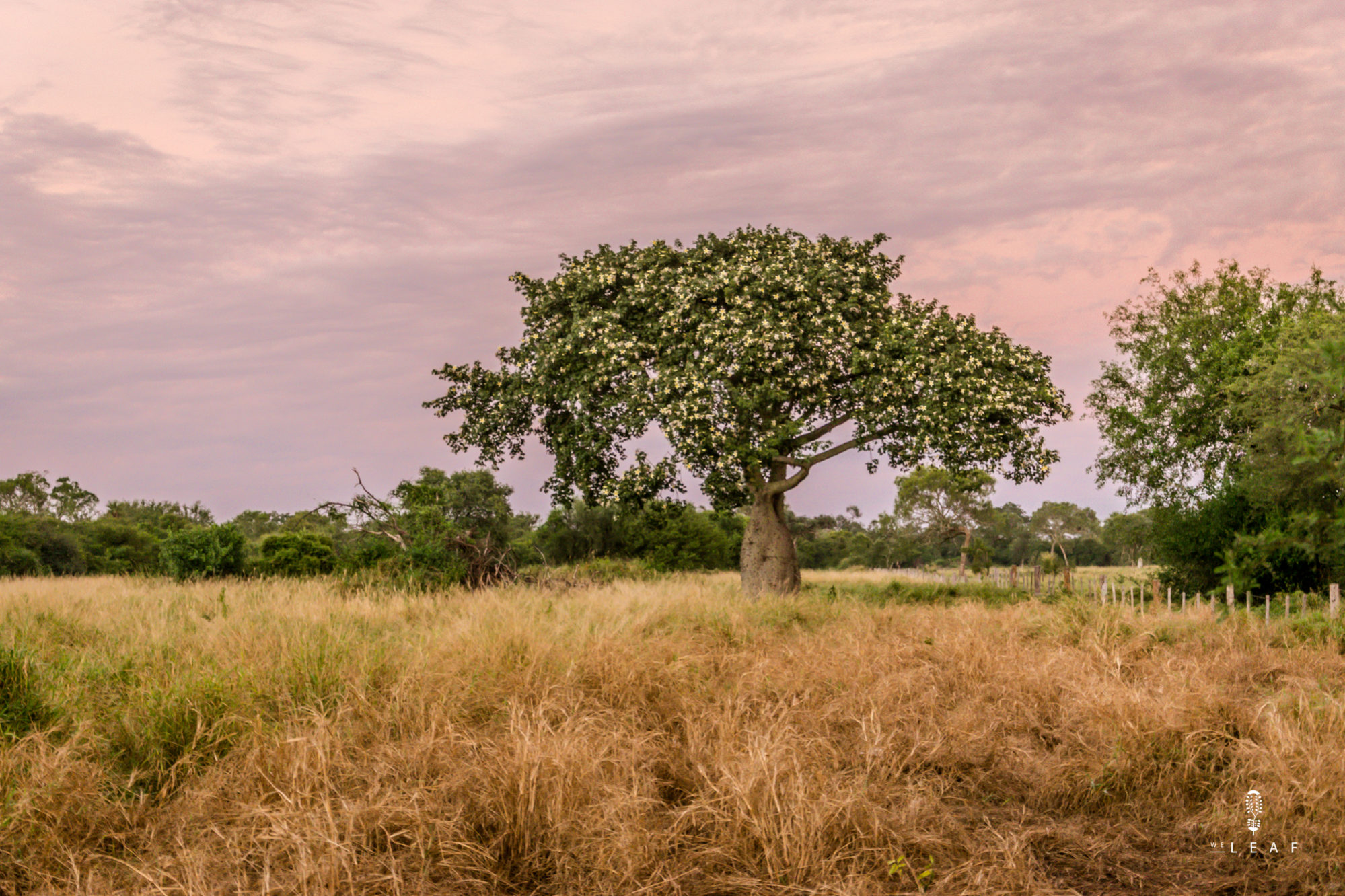
The agony of the puma

The Transchaco
April 24, 2018
15 things you didn’t know about Paraguay
May 2, 2018
9th of April - Filadelfia
Ausfahrt, Vorsicht Schüler, Lebensmitteln and many more German words are written on all the road signs and on the shelves in the supermarket. Everywhere there are tall, blond people with blur eyes who speak German. It looks like Filadelfia is touristic hotspot, but these people live here, even more, they are the reason that Filadelfia exists. They are Mennonites who ran away from the former Sovjet Union in the '20s because the upcoming communism didn't accept the Mennonites typical lifestyle. The Paraguayan government was looking for people to inhabit the hellish Chaco to protect it against a possible Bolivian invasion. In 1927 the first Mennonites came and founded Loma Plata. In 1930 another group came and they started Filadelfia. There was absolutely nothing when the first families arrives. A Transchaco didn't exist I'm these days. From Asuncion the trip took more than a week, over water, by train and the last part with cows and carts. In a short time the Mennonites built a big colony with a well established corporation as the central foundation.
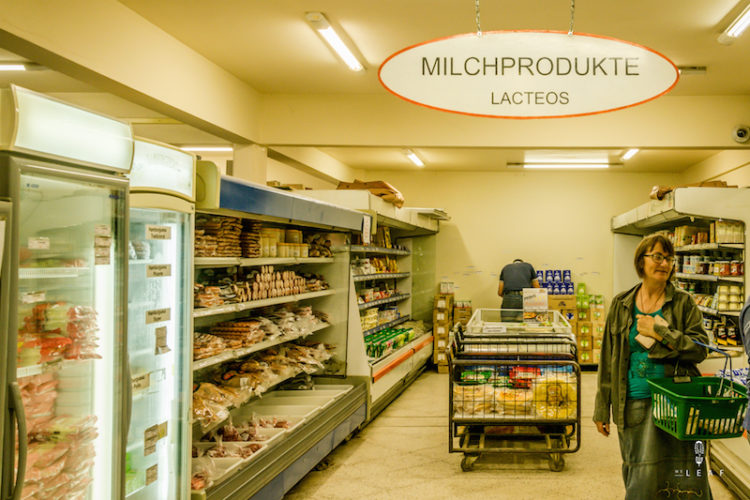
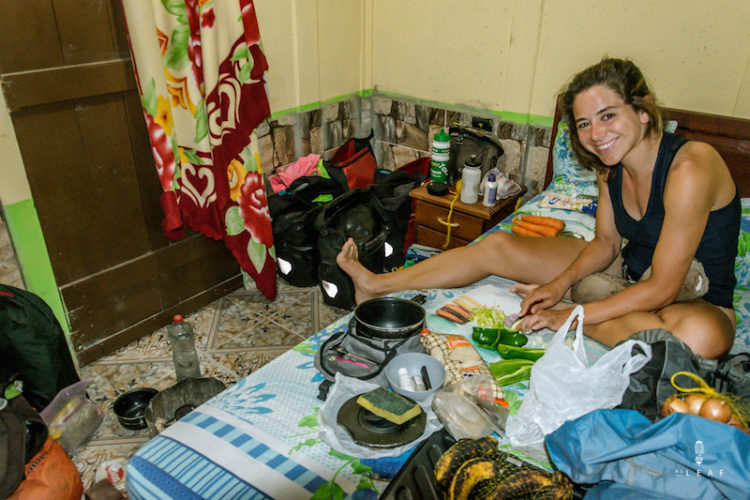
The Mennonites speak their own dialect, which is a mixture between German and Fries, a dialect from the north of the Netherlands. Until a few years ago all the schools were in German and Spanish wasn't reached. Many older people speak a faulty Spanish and were surprised to see the first Paraguayans in the supermarket who didn't speak German. Nowadays the schools are in Spanish and they are reached German. Some of the Mennonite colonies refuse to use any type of technology, like the Amish in the USA. Those groups live mainly in Bolivia. In Filadelfia they embraced the technology and their welfare is the result.
After five days of suffering in the heat and with the mosquitoes, Filadelfia is a pleasant stopover. From here the dry Chaco starts with even higher temperatures, where drinking water is hard to find and the nature is full of wild animals. People try to convinces to hitchhike to the Bolivian border, but every time they say 'puma', we know why we cycle the Transchaco. In fact cycling in the green hell isn't fun at all. It is flat like a pool table, endless straight roads, always wind from the front, hot as hell and quiet some traffic on the road. If we wanted a physical or mental challenge, we could have done the Vierdaagse van Nijmegen or the Sahel Marathon. If you want to see a puma, you will have to follow the agony until the end, we say to each other all the time.
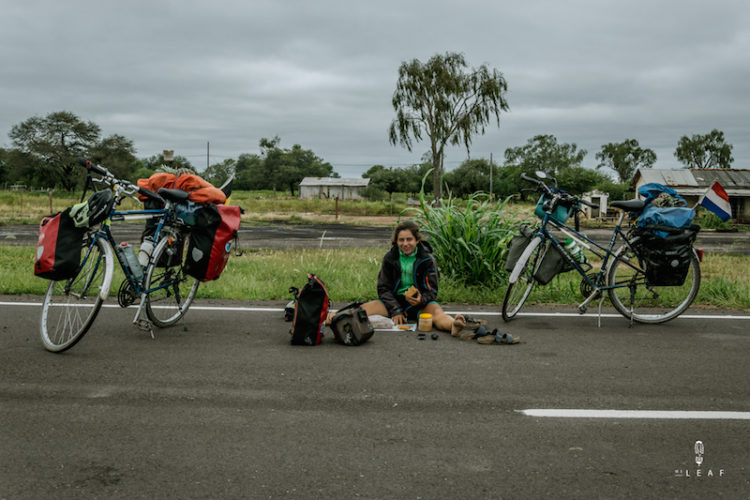
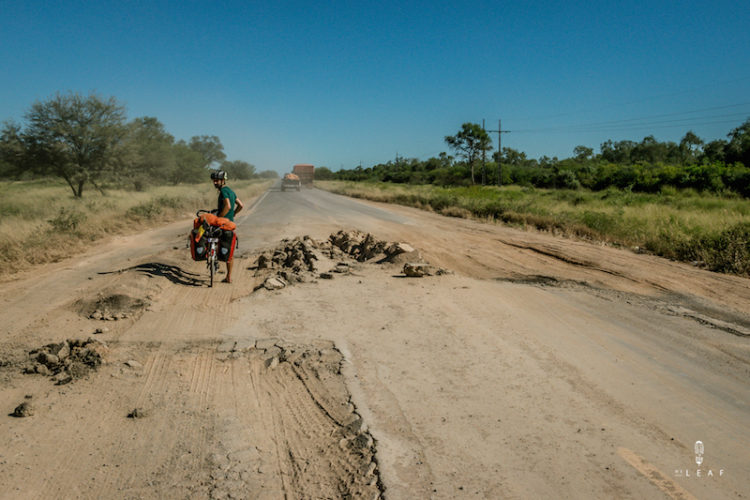
The next village always marks our daily distance because there we can find water and a place to sleep with airconditioning or at least a fan. We leave Filadelfia on a dusty dirt road and finally arrive in a small village where we find a dirty room to sleep. We are losing it a little and doubt about the next days. ‘130 kilometers is a lot in this heat’ Zoë says. ‘Then we have to hitchhike a part’ Olivier proposes, but that’s the last thing we want. We don’t want to give up, but finish things we start. There is no one else to fight with so we start arguing with each other. The green hell is pushing us mentally to the limit. In the evening it starts to rain and the streets change into a mud pool. We see it coming and already fear that we have to plunge through the mud in the morning. But the next morning we are standing outside with our bicycles, completely surprised. Zoë is wearing her jacket and still feels a little bit cold. The sun is hidden behind the clouds and the wind comes from the other side. Suddenly the temperature dropped twenty degrees and the landlord comes to say goodbye with a warm sweater. ‘Lovely!’ Olivier cheers. We have one enemy less today, although it’s replaced by another. Thirty kilometers of the next 130 to the next village are unpaved. With last nights rain these won’t be in a good condition. When we leave the village there are waiting many trucks because they can’t cross the mud. They have to wait two to three days for the water to drain. They asure us that we won’t have any problems with the bicycles, but we are not so sure if a truckers advice is that reliable. We take our chance and are completely alone on the road. The parts with asphalt are top quality, while the dirt roads aren’t that bad at all. The road is 130 kilometers in a straight line and we play some games to forget our saddle sour. We try to cycle with our eyes closed as long as possible, and do some word games with animals, in which invented names like prison pony and fart squirrel make the cut. But we need more than this to fight ourselves true.
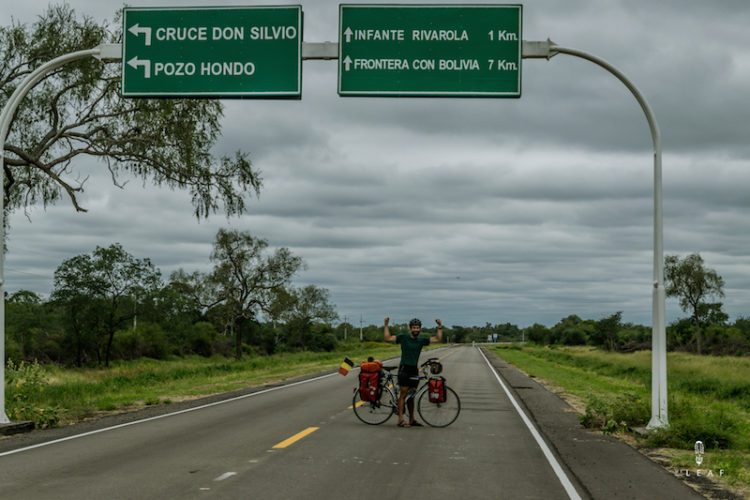
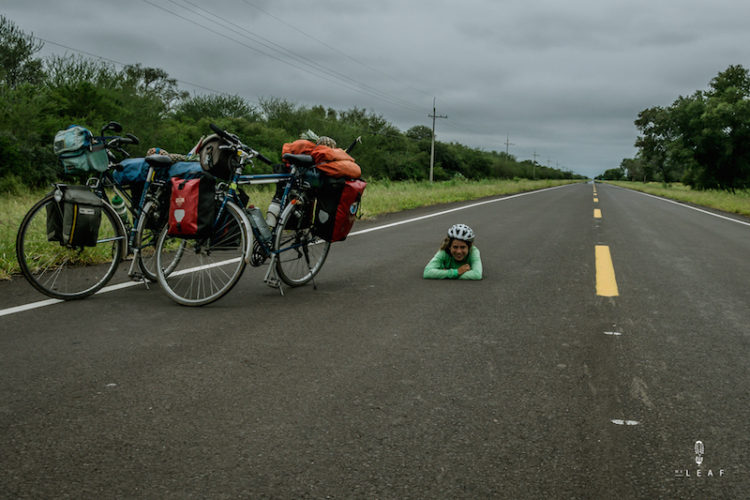
‘You really need to desire to see a puma’ Olivier says in the morning ‘then he comes’. For more than a week Zoë is already dreaming about a puma crossing the road. On our automatic pilot we continue cycling, our eyes permanently focused on the road. Suddenly we are right in the saddle with our heads up. Right in front of us, something crosses the road. It is no cow, no goat, nor a dog. A big, beige coloured cat crosses the road smoothly. Even from a distance it looks giant. ‘There, at that tree it disappeared’ Olivier says. ‘We can’t just stand here, it’s a puma’ Zoë says full of adrenaline. ‘Yes I know, but a puma!’ Olivier hesitates but quickly continues. Wilder than this a wild cat can’t be. This is no safari park, no tour guides, no walkie talkie or rangers, but real nature. Twenty kilometers long we forget the pain and cycle with a big smile. ‘What a sacrifice to see a puma’ Olivier says. ‘With this it was worth to cycle every kilometer of the Chaco’ Zoë says with a big smile.
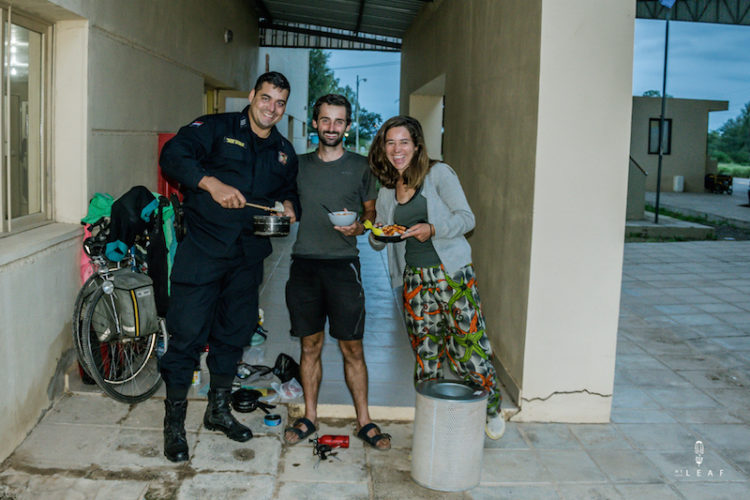
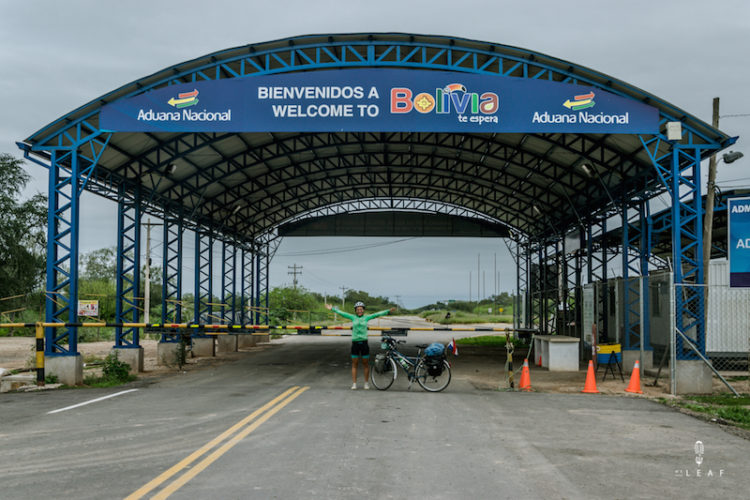
Thanks to the cool weather we can sleep in our tent without any problems, and there are even less mosquitoes. Around seven o’clock we flop on our mattresses, passed out. Today was our longest cycling day ever and we feel it. We need our rest because the next two days we need to do 120 kilometers twice. After all the stories about pumas, snakes and herds of wild boar we prefer not to sleep in the wild nature. The only option is to do the 120 kilometer in one go. On the last part there is barely any traffic, and we can already see a rare truck from a couple of kilometers. We ask ourselves what a truck driver must think about us. And that’s what we ask ourselves as well. ‘Why do we do this?’. The Chaco was mentally and physically very challenging, but thanks to the puma the agony was worth all the effort. Finished, done this, done that. A new mark on our list. After a night at the border control we pass the entrance gate for Bolivia. The unknown Paraguay was worth the detour.
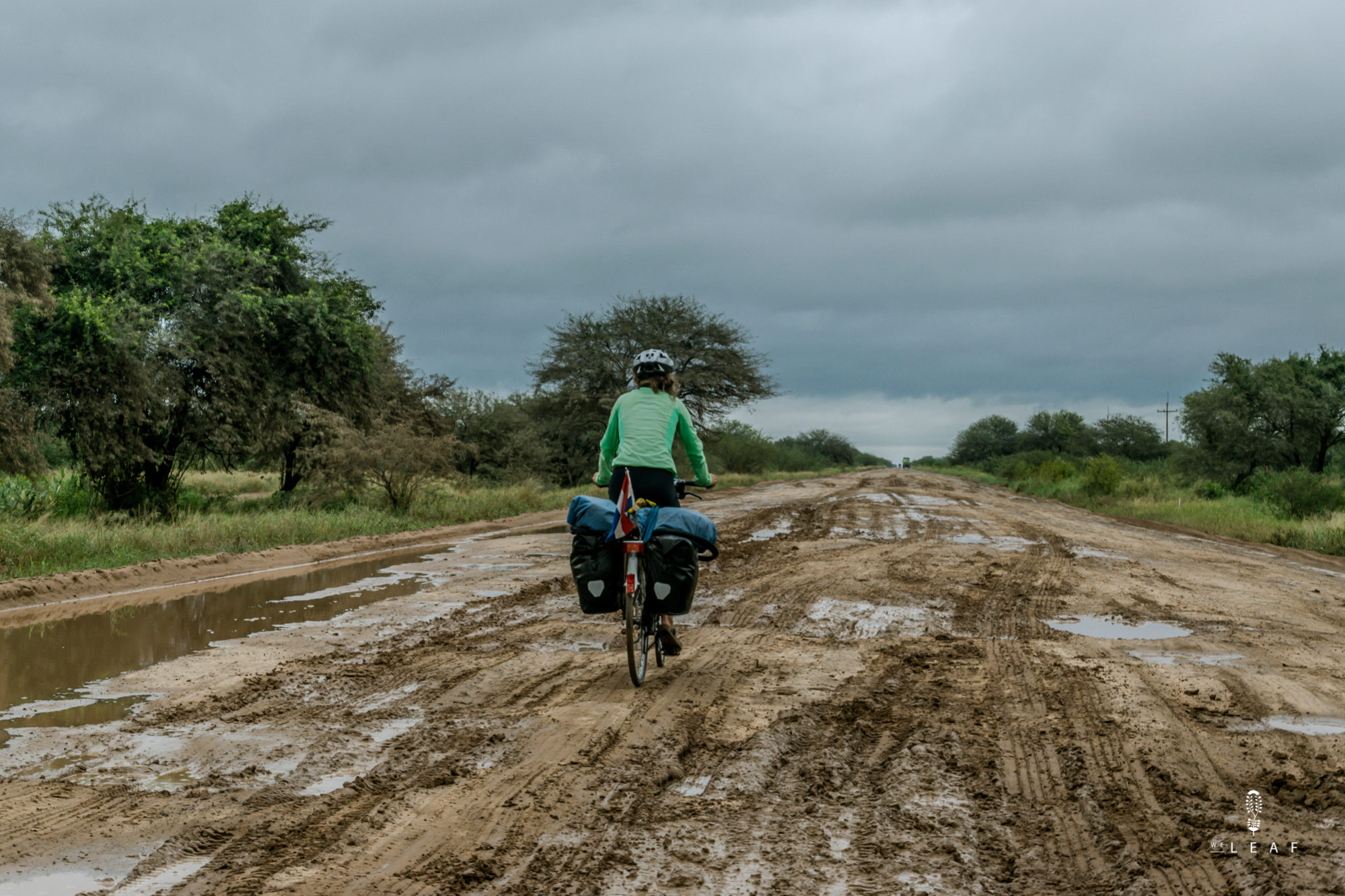




2 Comments
What Bicycles were you riding would be very interesting to know further details
Hi!
We were riding on 30 year old Giant Troopers. Excellent bicycles! You can find more information in our gear list: https://weleaf.nl/en/portfolio-item/giant-bicycles/